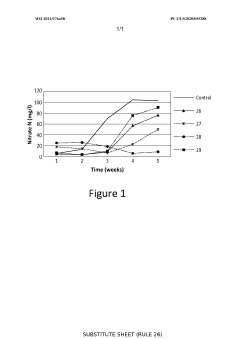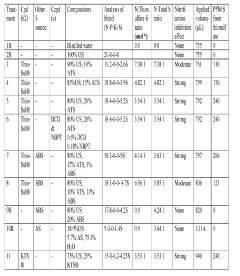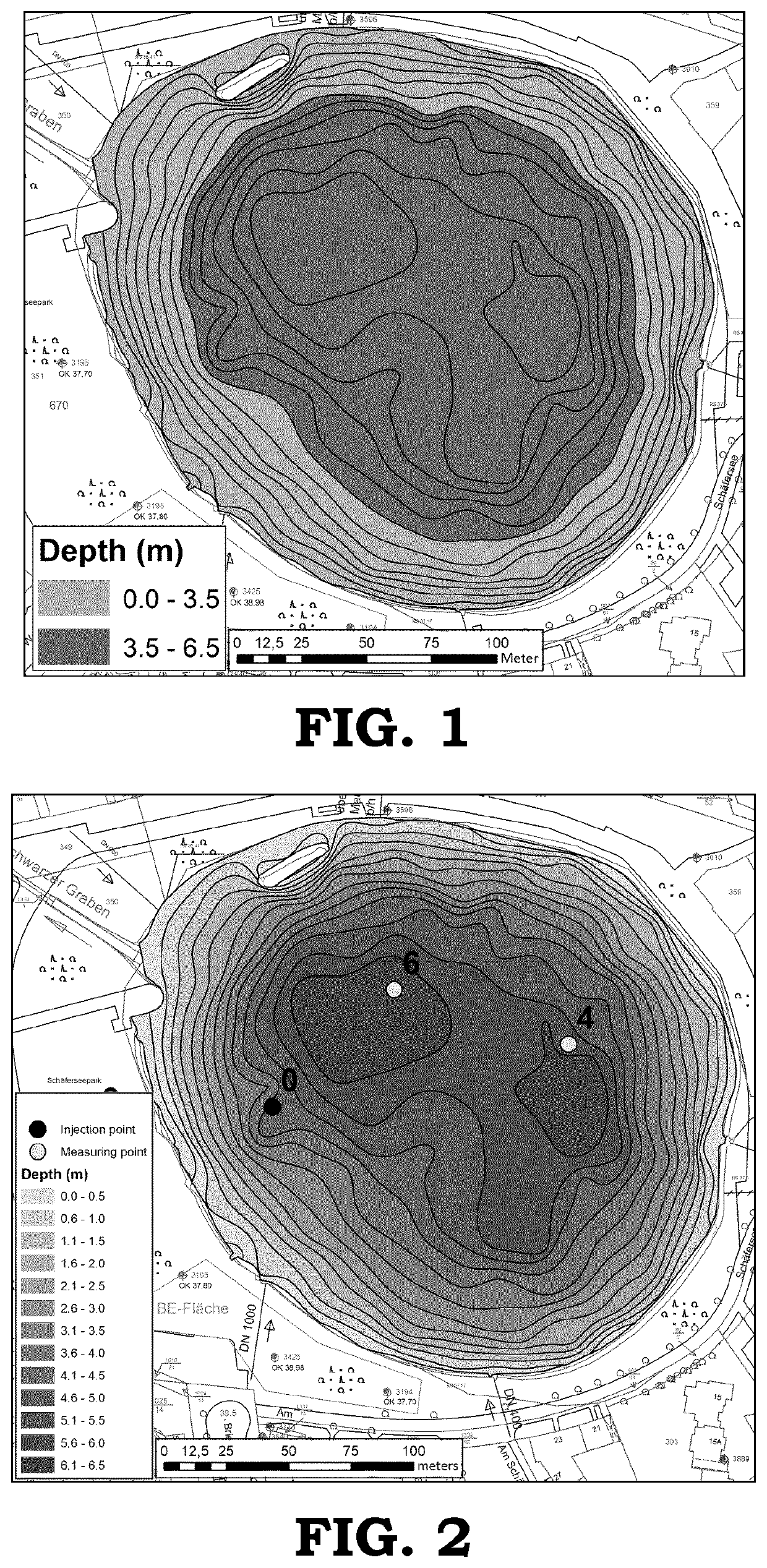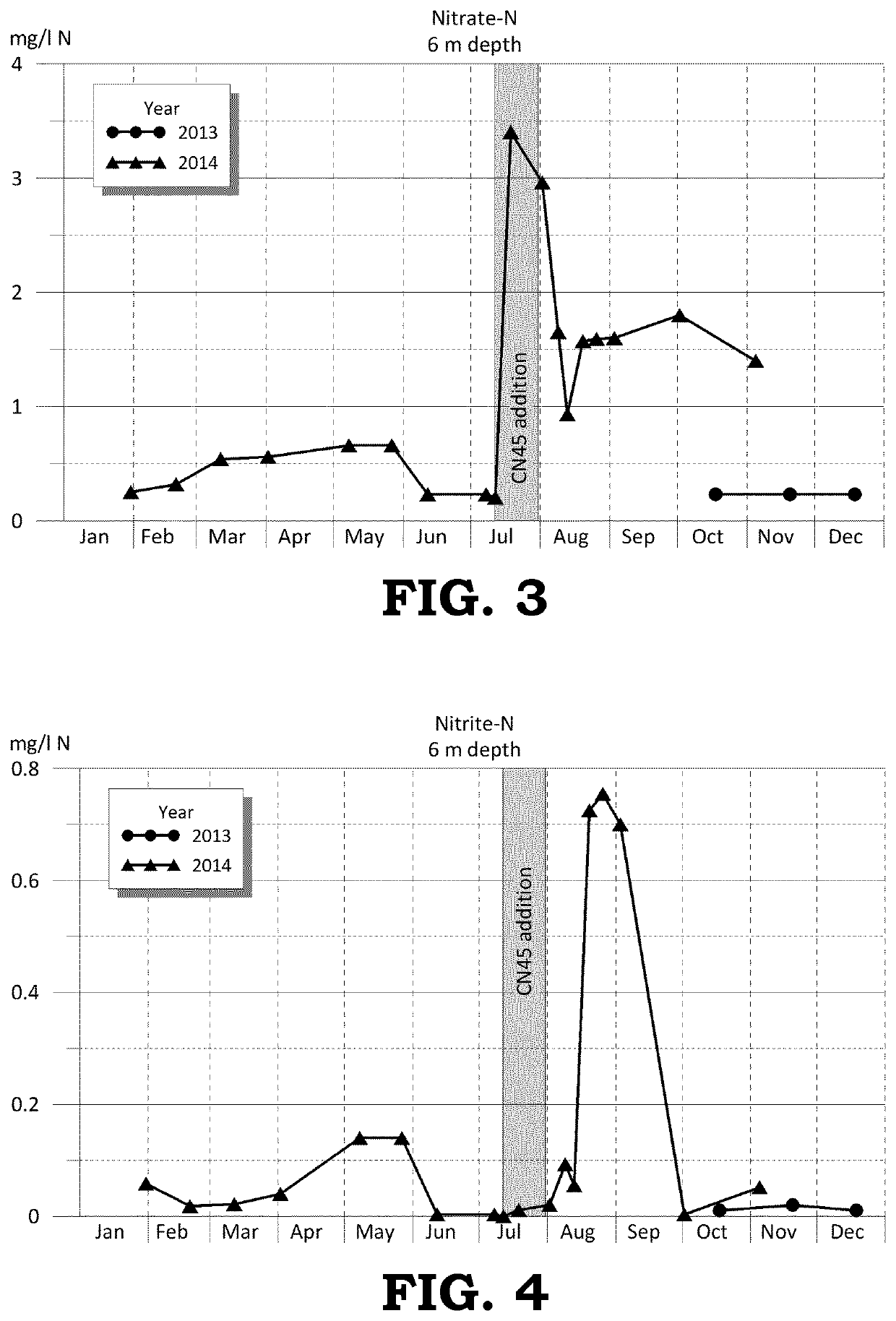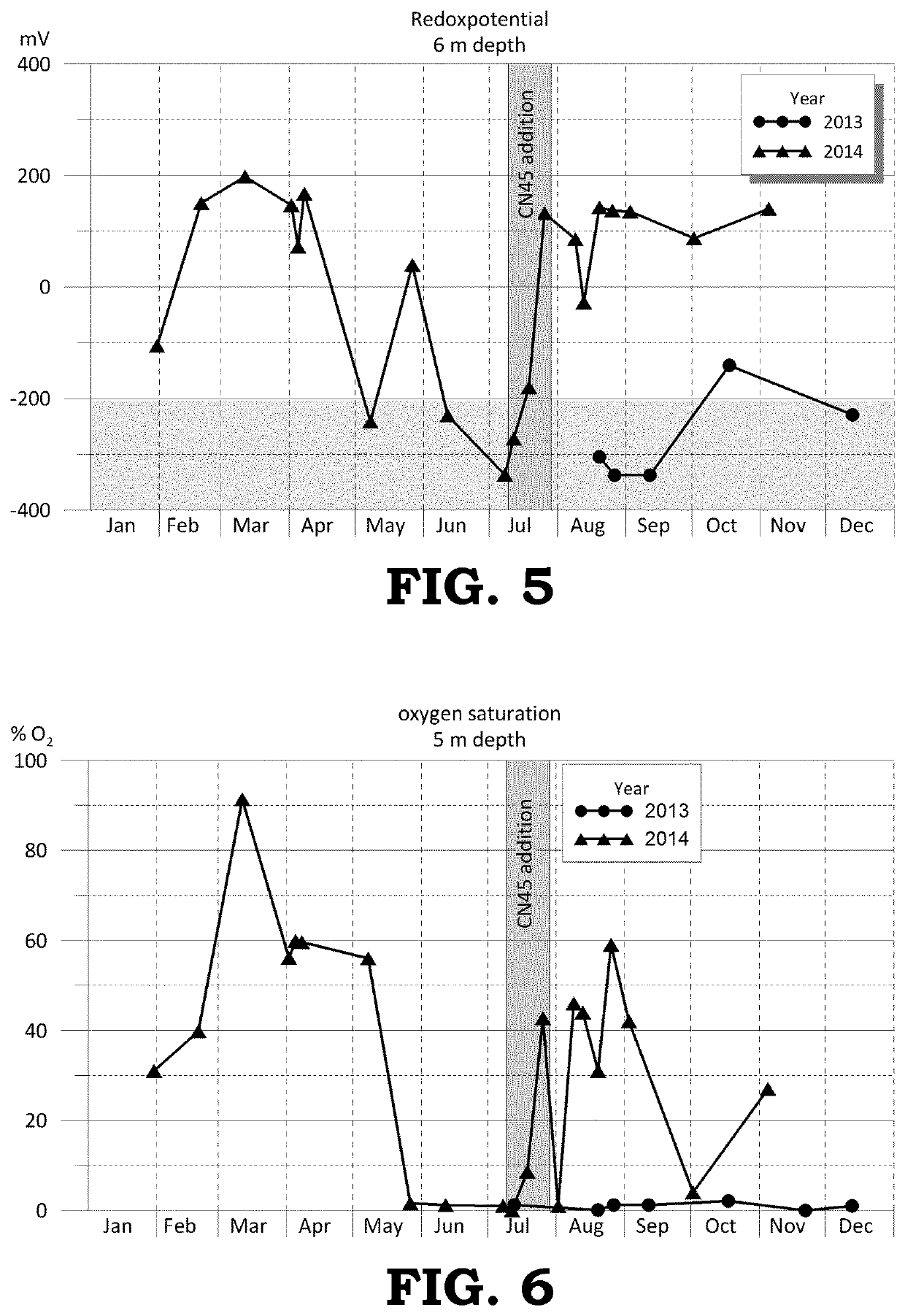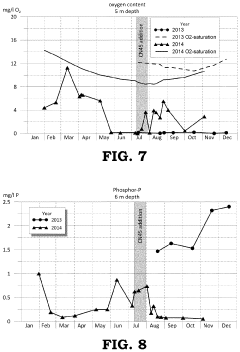How Nitrification Impacts Nitrogen Retention In Wetlands?
SEP 12, 202510 MIN READ
Generate Your Research Report Instantly with AI Agent
Patsnap Eureka helps you evaluate technical feasibility & market potential.
Wetland Nitrification Background and Research Objectives
Wetlands represent one of Earth's most valuable ecosystems, serving as natural filters that process nutrients and pollutants from water systems. Among these nutrients, nitrogen plays a particularly critical role in wetland ecology. Nitrification, the biological oxidation of ammonia to nitrite and subsequently to nitrate, stands as a fundamental process within the nitrogen cycle that significantly influences nitrogen retention capabilities in wetland environments.
The historical understanding of wetland nitrogen dynamics has evolved substantially over the past five decades. Initially viewed primarily as simple sinks for excess nutrients, wetlands are now recognized as complex biogeochemical reactors where multiple nitrogen transformation processes occur simultaneously. Nitrification emerged as a research focus in wetland science during the 1970s, with pioneering studies documenting the process in various wetland types.
Recent technological advancements in molecular biology and isotope analysis have revolutionized our ability to track nitrification processes at microscopic levels. These developments have revealed previously unknown microbial communities and pathways involved in wetland nitrification, challenging traditional models of nitrogen cycling. The discovery of anaerobic ammonia oxidation (anammox) and complete ammonia oxidation (comammox) processes has further complicated our understanding of nitrogen transformation in wetland environments.
Climate change presents an emerging challenge to wetland nitrification processes. Rising temperatures, altered precipitation patterns, and increased frequency of extreme weather events directly impact microbial communities responsible for nitrification. These shifts potentially compromise the nitrogen retention capacity of wetlands globally, threatening their ecosystem services.
The primary objective of this technical research is to comprehensively evaluate how nitrification processes influence nitrogen retention efficiency across different wetland types. Specifically, we aim to identify the key environmental factors that regulate nitrification rates, quantify the contribution of nitrification to overall nitrogen removal, and assess how anthropogenic disturbances modify these processes.
Secondary research goals include mapping the spatial and temporal variability of nitrification within wetland systems, characterizing the microbial communities responsible for nitrification across different wetland types, and developing predictive models for nitrogen retention based on nitrification parameters. These objectives align with growing international interest in optimizing wetland management for enhanced ecosystem services.
The findings from this research will directly inform wetland restoration practices, constructed wetland design, and policy decisions regarding watershed management. By elucidating the mechanisms through which nitrification impacts nitrogen retention, this work aims to enhance the effectiveness of wetlands as natural infrastructure for water quality improvement in an increasingly nitrogen-saturated world.
The historical understanding of wetland nitrogen dynamics has evolved substantially over the past five decades. Initially viewed primarily as simple sinks for excess nutrients, wetlands are now recognized as complex biogeochemical reactors where multiple nitrogen transformation processes occur simultaneously. Nitrification emerged as a research focus in wetland science during the 1970s, with pioneering studies documenting the process in various wetland types.
Recent technological advancements in molecular biology and isotope analysis have revolutionized our ability to track nitrification processes at microscopic levels. These developments have revealed previously unknown microbial communities and pathways involved in wetland nitrification, challenging traditional models of nitrogen cycling. The discovery of anaerobic ammonia oxidation (anammox) and complete ammonia oxidation (comammox) processes has further complicated our understanding of nitrogen transformation in wetland environments.
Climate change presents an emerging challenge to wetland nitrification processes. Rising temperatures, altered precipitation patterns, and increased frequency of extreme weather events directly impact microbial communities responsible for nitrification. These shifts potentially compromise the nitrogen retention capacity of wetlands globally, threatening their ecosystem services.
The primary objective of this technical research is to comprehensively evaluate how nitrification processes influence nitrogen retention efficiency across different wetland types. Specifically, we aim to identify the key environmental factors that regulate nitrification rates, quantify the contribution of nitrification to overall nitrogen removal, and assess how anthropogenic disturbances modify these processes.
Secondary research goals include mapping the spatial and temporal variability of nitrification within wetland systems, characterizing the microbial communities responsible for nitrification across different wetland types, and developing predictive models for nitrogen retention based on nitrification parameters. These objectives align with growing international interest in optimizing wetland management for enhanced ecosystem services.
The findings from this research will directly inform wetland restoration practices, constructed wetland design, and policy decisions regarding watershed management. By elucidating the mechanisms through which nitrification impacts nitrogen retention, this work aims to enhance the effectiveness of wetlands as natural infrastructure for water quality improvement in an increasingly nitrogen-saturated world.
Market Applications of Wetland Nitrogen Management
The market for wetland nitrogen management technologies and services is experiencing significant growth as environmental regulations become more stringent and awareness of ecosystem services increases. Agricultural sectors represent the largest potential market, with farmers increasingly adopting constructed wetlands as buffer zones to mitigate nitrogen runoff from fertilizers. This application not only helps comply with water quality regulations but also preserves soil fertility and reduces fertilizer costs through nitrogen recycling.
Municipal wastewater treatment facilities constitute another substantial market segment, where engineered wetlands serve as tertiary treatment systems. These natural-based solutions offer cost-effective alternatives to conventional nitrogen removal technologies, with operational costs typically 20-30% lower than traditional chemical treatment methods. The integration of wetland systems into urban water management infrastructure is gaining traction in sustainable city planning initiatives worldwide.
Environmental restoration projects funded by government agencies and conservation organizations form a growing market niche. These initiatives focus on rehabilitating degraded wetlands to enhance their nitrogen processing capabilities, thereby improving downstream water quality and supporting biodiversity conservation efforts. The ecosystem service valuation of nitrogen retention in wetlands has created new financial mechanisms, including nitrogen credit trading systems in some regions.
Industrial applications are emerging in sectors such as food processing, aquaculture, and manufacturing, where nitrogen-rich effluents require treatment before discharge. Wetland-based solutions offer these industries compliance pathways that align with corporate sustainability goals while potentially reducing regulatory compliance costs.
The consulting and engineering services market surrounding wetland nitrogen management has expanded considerably, with specialized firms offering expertise in wetland design, construction, monitoring, and maintenance. This knowledge-based sector delivers customized solutions that optimize nitrification processes based on specific site conditions and treatment objectives.
Technology providers are developing innovative monitoring systems that utilize real-time sensors, remote sensing, and predictive analytics to optimize nitrogen transformation processes in managed wetlands. These technologies enable adaptive management approaches that can maximize nitrogen retention efficiency across seasonal variations and changing environmental conditions.
The global market value for wetland-based water treatment solutions, including nitrogen management, is projected to grow substantially as water quality concerns intensify and natural infrastructure solutions gain wider acceptance across public and private sectors. Regions with the highest market potential include agricultural areas with significant nitrogen pollution challenges and urban centers seeking sustainable water management alternatives.
Municipal wastewater treatment facilities constitute another substantial market segment, where engineered wetlands serve as tertiary treatment systems. These natural-based solutions offer cost-effective alternatives to conventional nitrogen removal technologies, with operational costs typically 20-30% lower than traditional chemical treatment methods. The integration of wetland systems into urban water management infrastructure is gaining traction in sustainable city planning initiatives worldwide.
Environmental restoration projects funded by government agencies and conservation organizations form a growing market niche. These initiatives focus on rehabilitating degraded wetlands to enhance their nitrogen processing capabilities, thereby improving downstream water quality and supporting biodiversity conservation efforts. The ecosystem service valuation of nitrogen retention in wetlands has created new financial mechanisms, including nitrogen credit trading systems in some regions.
Industrial applications are emerging in sectors such as food processing, aquaculture, and manufacturing, where nitrogen-rich effluents require treatment before discharge. Wetland-based solutions offer these industries compliance pathways that align with corporate sustainability goals while potentially reducing regulatory compliance costs.
The consulting and engineering services market surrounding wetland nitrogen management has expanded considerably, with specialized firms offering expertise in wetland design, construction, monitoring, and maintenance. This knowledge-based sector delivers customized solutions that optimize nitrification processes based on specific site conditions and treatment objectives.
Technology providers are developing innovative monitoring systems that utilize real-time sensors, remote sensing, and predictive analytics to optimize nitrogen transformation processes in managed wetlands. These technologies enable adaptive management approaches that can maximize nitrogen retention efficiency across seasonal variations and changing environmental conditions.
The global market value for wetland-based water treatment solutions, including nitrogen management, is projected to grow substantially as water quality concerns intensify and natural infrastructure solutions gain wider acceptance across public and private sectors. Regions with the highest market potential include agricultural areas with significant nitrogen pollution challenges and urban centers seeking sustainable water management alternatives.
Current Nitrification Challenges in Wetland Ecosystems
Nitrification in wetland ecosystems faces significant challenges that impact nitrogen retention efficiency. The process of nitrification, where ammonia is oxidized to nitrite and subsequently to nitrate by specialized bacteria, is highly sensitive to environmental conditions prevalent in wetlands. Temperature fluctuations severely affect nitrifying bacterial communities, with optimal activity occurring between 20-30°C. During colder seasons, nitrification rates decrease substantially, creating seasonal variability in nitrogen processing capacity.
Oxygen availability represents another critical limitation. Nitrification is strictly aerobic, requiring 4.57g of oxygen to oxidize 1g of ammonia nitrogen. However, wetlands are characterized by predominantly anaerobic conditions, with oxygen limited to thin surface layers and rhizospheres. This spatial constraint creates microsite-dependent nitrification patterns that are difficult to predict and manage at ecosystem scales.
pH sensitivity further complicates nitrification processes in wetlands. Nitrifying bacteria operate optimally within a narrow pH range of 7.5-8.5, while many wetlands experience acidic conditions due to organic matter decomposition. This mismatch between optimal and actual pH conditions often results in suboptimal nitrification rates, affecting overall nitrogen transformation pathways.
Competition dynamics between nitrifiers and other microbial communities present additional challenges. Heterotrophic bacteria often outcompete nitrifiers for available oxygen and nutrients, particularly in carbon-rich wetland environments. This competitive disadvantage can suppress nitrification rates even when other environmental conditions are favorable.
Hydrological regime variability significantly impacts nitrification stability. Fluctuating water levels alter redox conditions and oxygen availability, creating unstable environments for nitrifying communities. During flooding events, nitrification may be severely inhibited, while during drawdown periods, increased aeration can temporarily boost nitrification rates, creating unpredictable nitrogen processing patterns.
Anthropogenic influences introduce additional complexities. Agricultural runoff containing high ammonia concentrations can overwhelm nitrification capacity, while pesticides and heavy metals can inhibit nitrifying bacterial activity. Climate change exacerbates these challenges through altered precipitation patterns, increased temperatures, and more frequent extreme weather events that disrupt established nitrification processes.
Methodological limitations in measuring nitrification rates in heterogeneous wetland environments further complicate our understanding. Current techniques often fail to capture the spatial and temporal variability of nitrification processes, leading to incomplete assessments of nitrogen transformation dynamics and retention capabilities in these complex ecosystems.
Oxygen availability represents another critical limitation. Nitrification is strictly aerobic, requiring 4.57g of oxygen to oxidize 1g of ammonia nitrogen. However, wetlands are characterized by predominantly anaerobic conditions, with oxygen limited to thin surface layers and rhizospheres. This spatial constraint creates microsite-dependent nitrification patterns that are difficult to predict and manage at ecosystem scales.
pH sensitivity further complicates nitrification processes in wetlands. Nitrifying bacteria operate optimally within a narrow pH range of 7.5-8.5, while many wetlands experience acidic conditions due to organic matter decomposition. This mismatch between optimal and actual pH conditions often results in suboptimal nitrification rates, affecting overall nitrogen transformation pathways.
Competition dynamics between nitrifiers and other microbial communities present additional challenges. Heterotrophic bacteria often outcompete nitrifiers for available oxygen and nutrients, particularly in carbon-rich wetland environments. This competitive disadvantage can suppress nitrification rates even when other environmental conditions are favorable.
Hydrological regime variability significantly impacts nitrification stability. Fluctuating water levels alter redox conditions and oxygen availability, creating unstable environments for nitrifying communities. During flooding events, nitrification may be severely inhibited, while during drawdown periods, increased aeration can temporarily boost nitrification rates, creating unpredictable nitrogen processing patterns.
Anthropogenic influences introduce additional complexities. Agricultural runoff containing high ammonia concentrations can overwhelm nitrification capacity, while pesticides and heavy metals can inhibit nitrifying bacterial activity. Climate change exacerbates these challenges through altered precipitation patterns, increased temperatures, and more frequent extreme weather events that disrupt established nitrification processes.
Methodological limitations in measuring nitrification rates in heterogeneous wetland environments further complicate our understanding. Current techniques often fail to capture the spatial and temporal variability of nitrification processes, leading to incomplete assessments of nitrogen transformation dynamics and retention capabilities in these complex ecosystems.
Established Nitrification Management Approaches
01 Biological nitrification processes for nitrogen retention
Biological nitrification processes utilize specific microorganisms to convert ammonia to nitrite and then to nitrate, which can be more easily retained in soil or treatment systems. These processes often involve controlled environments where nitrifying bacteria such as Nitrosomonas and Nitrobacter can thrive. By optimizing conditions like temperature, pH, and oxygen levels, these biological systems can significantly improve nitrogen retention rates in agricultural soils and wastewater treatment facilities.- Biological nitrification processes for nitrogen retention: Biological nitrification processes utilize specific microorganisms to convert ammonia to nitrite and then to nitrate, which can be more easily retained in soil or treatment systems. These processes often involve controlled environments where nitrifying bacteria such as Nitrosomonas and Nitrobacter can thrive. By optimizing conditions like temperature, pH, and oxygen levels, these biological systems can significantly improve nitrogen retention rates and reduce nitrogen loss through leaching or volatilization.
- Chemical additives and inhibitors for nitrogen retention: Various chemical additives and inhibitors can be incorporated into nitrification processes to enhance nitrogen retention. These compounds work by selectively inhibiting certain steps of the nitrification process, slowing the conversion of ammonium to nitrate and thereby reducing nitrogen losses. Some inhibitors target specific enzymes involved in nitrification, while others modify soil chemistry to create conditions favorable for nitrogen retention. These approaches are particularly useful in agricultural applications where nitrogen fertilizer efficiency is crucial.
- Advanced reactor designs for improved nitrification: Specialized reactor designs can significantly enhance nitrification processes and nitrogen retention. These systems often feature compartmentalized zones with different conditions to optimize various stages of the nitrification process. Innovations include fluidized bed reactors, membrane bioreactors, and sequencing batch reactors that provide ideal environments for nitrifying organisms while minimizing nitrogen losses. Some designs incorporate recirculation systems to reprocess nitrogen compounds that would otherwise be lost, substantially improving overall nitrogen retention efficiency.
- Integration of nitrification with other treatment processes: Combining nitrification with complementary treatment processes creates synergistic systems that maximize nitrogen retention. These integrated approaches often couple nitrification with denitrification, anaerobic ammonium oxidation (anammox), or physical separation techniques. By connecting these processes in strategic sequences, nitrogen can be transformed into forms that are more easily retained or recovered. Such integrated systems are particularly valuable in wastewater treatment facilities and agricultural operations where nitrogen management is critical for environmental compliance.
- Monitoring and control systems for nitrification optimization: Advanced monitoring and control systems enable real-time optimization of nitrification processes for maximum nitrogen retention. These technologies utilize sensors to track key parameters such as dissolved oxygen, pH, temperature, and nitrogen compound concentrations throughout the process. Automated control systems then adjust operational conditions to maintain optimal nitrification performance. Some systems incorporate predictive modeling and machine learning algorithms to anticipate changes in process conditions and proactively adjust parameters, resulting in consistently high nitrogen retention rates even under variable input conditions.
02 Chemical additives and inhibitors for nitrogen retention
Various chemical additives and inhibitors can be incorporated into nitrification processes to enhance nitrogen retention. These compounds work by selectively inhibiting certain steps of the nitrification process, slowing the conversion of ammonium to nitrate and thereby reducing nitrogen losses. Some inhibitors target specific enzymes involved in nitrification, while others modify soil chemistry to create conditions that favor nitrogen retention. These approaches are particularly valuable in agricultural applications where nitrogen fertilizer efficiency is crucial.Expand Specific Solutions03 Advanced reactor designs for improved nitrification
Specialized reactor designs can significantly enhance nitrification processes and nitrogen retention. These systems often feature compartmentalized zones with different conditions to optimize various stages of the nitrification process. Innovations include fluidized bed reactors, membrane bioreactors, and sequencing batch reactors that provide ideal environments for nitrifying organisms while minimizing nitrogen losses. Some designs incorporate recirculation systems to reprocess nitrogen compounds that would otherwise be lost, substantially improving overall nitrogen retention efficiency.Expand Specific Solutions04 Integration of nitrification with other treatment processes
Combining nitrification with complementary treatment processes creates synergistic systems that maximize nitrogen retention. These integrated approaches often pair nitrification with denitrification, anaerobic ammonium oxidation (anammox), or physical separation technologies. By creating a comprehensive treatment train, these systems can capture and retain nitrogen through multiple pathways, significantly reducing overall nitrogen losses. Such integrated systems are particularly effective in wastewater treatment facilities and intensive agricultural operations where nitrogen management is critical.Expand Specific Solutions05 Monitoring and control systems for nitrification optimization
Advanced monitoring and control systems enable real-time optimization of nitrification processes for maximum nitrogen retention. These technologies utilize sensors to track key parameters such as dissolved oxygen, pH, temperature, and nitrogen compound concentrations throughout the nitrification process. Automated control systems then adjust operating conditions to maintain optimal nitrification rates while minimizing nitrogen losses. Some systems incorporate predictive algorithms and machine learning to anticipate changes in process conditions and proactively adjust parameters to maintain peak nitrogen retention efficiency.Expand Specific Solutions
Leading Research Institutions and Environmental Organizations
The nitrification process in wetlands is at a critical research stage, with growing market interest due to its impact on nitrogen retention and water quality management. The technology is moderately mature but evolving rapidly, with academic institutions leading fundamental research while companies develop practical applications. Key players include research-focused organizations like the Institute of Soil Science (Chinese Academy of Sciences) and Institute of Hydrobiology conducting foundational studies, alongside universities such as Tongji, Shandong, and Melbourne advancing theoretical frameworks. Commercial entities like Soilgenic Technologies, Yara International, and Verdesian Life Sciences are translating research into agricultural applications, while Pastoral Robotics and COMPO EXPERT are developing specialized solutions for nitrogen management in wetland environments. The field represents a growing intersection between academic research and commercial innovation in environmental management.
Institute of Soil Science, Chinese Academy of Sciences
Technical Solution: The Institute of Soil Science, Chinese Academy of Sciences (ISSCAS) has developed comprehensive research on nitrification processes in wetland ecosystems, focusing on how these processes affect nitrogen retention. Their approach integrates molecular biology techniques to identify and quantify nitrifying microorganisms (ammonia-oxidizing bacteria and archaea) with biogeochemical process measurements. ISSCAS researchers have established that nitrification serves as a critical link in wetland nitrogen cycling by converting ammonium to nitrate, which can then undergo denitrification or plant uptake. Their studies demonstrate that nitrification rates vary significantly with seasonal temperature fluctuations, oxygen availability, and vegetation types in wetlands. ISSCAS has documented that in certain Chinese wetlands, nitrification can process up to 60-70% of available ammonium, creating pathways for both nitrogen retention through coupled nitrification-denitrification and nitrogen loss through incomplete denitrification or leaching of nitrate. Their research has led to the development of wetland management strategies that optimize nitrogen removal efficiency by manipulating hydraulic retention time and vegetation composition to enhance coupled nitrification-denitrification processes.
Strengths: ISSCAS brings extensive field experience across diverse Chinese wetland ecosystems, providing comprehensive understanding of nitrification processes under varying environmental conditions. Their integration of molecular techniques with ecosystem-level measurements creates robust datasets for modeling nitrogen dynamics. Weaknesses: Their research may be geographically limited to Chinese wetland types, potentially limiting applicability to other global wetland ecosystems with different climatic conditions or vegetation communities.
Institute of Hydrobiology, Chinese Academy of Sciences
Technical Solution: The Institute of Hydrobiology (IHB) has pioneered research on nitrification dynamics in wetland systems through their integrated water-sediment-plant approach. Their technical solution involves examining nitrification as a key process affecting nitrogen retention through multiple pathways. IHB researchers have documented how nitrification transforms ammonium (NH4+) to nitrate (NO3-), creating conditions for subsequent nitrogen processing. Their studies demonstrate that nitrification rates in wetlands are controlled by oxygen gradients at the sediment-water interface, with higher rates occurring in the oxidized rhizosphere of wetland plants. IHB has developed specialized rhizosphere sampling techniques that allow for precise measurement of nitrification activity around plant roots, showing that this microzone can process 40-60% of wetland nitrogen in vegetated systems. Their research has revealed that nitrification efficiency varies seasonally, with temperature being a primary driver, showing 2-3 times higher rates during summer months compared to winter. Additionally, IHB has documented how nitrification creates nitrate that can be retained through plant uptake or lost through denitrification, with the balance determining overall nitrogen retention efficiency in wetland systems.
Strengths: IHB excels in understanding the complex interactions between wetland plants and nitrifying microorganisms, particularly in the critical rhizosphere zone. Their seasonal studies provide valuable insights into temporal dynamics of nitrogen processing. Weaknesses: Their technical approach may overemphasize plant-mediated processes in some contexts, potentially underestimating the importance of water column nitrification in open-water wetland systems.
Key Scientific Advances in Wetland Nitrification Processes
Inhibitors of soil nitrification and processes to prevent same
PatentWO2021076458A1
Innovation
- The use of sulfur-based compounds like polysulfides, thiosulfates, and hydrosulfides as nitrification inhibitors, applied in specific ratios with fertilizers to inhibit the conversion of ammonium to nitrite and subsequently to nitrate, thereby reducing nitrogen losses and environmental impact without harming soil microbiome health.
Remediation and/or restoration of an anoxic body of water
PatentActiveUS20210269336A1
Innovation
- A method involving the mixing of a calcium nitrate solution with water having an oxygen saturation of 50-150% to create a mixture that is pumped into anoxic bodies of water, maintaining natural stratification and binding phosphorus, thereby promoting aerobic processes and reducing nutrient remobilization.
Policy Framework for Wetland Conservation and Management
The effective management of wetlands for nitrogen retention requires a comprehensive policy framework that addresses the complex process of nitrification. Current policies across various jurisdictions demonstrate significant variation in their approach to wetland conservation and nitrogen management, creating challenges for consistent implementation of science-based practices.
National-level policies in many countries have begun incorporating specific provisions related to nitrogen cycling in wetlands, recognizing the critical role these ecosystems play in water quality management. The Clean Water Act in the United States and the Water Framework Directive in the European Union represent landmark legislation that establish regulatory foundations for wetland protection with implicit considerations for nitrogen processing.
Regional and local governance structures often implement more targeted policies that directly address nitrification processes. These include buffer zone requirements, nutrient management plans, and constructed wetland design standards that optimize conditions for beneficial nitrogen transformation. Such policies typically mandate monitoring of key parameters including dissolved oxygen, pH, and temperature that influence nitrification rates.
Financial mechanisms constitute another critical component of the policy framework, with incentive programs encouraging landowners to maintain or restore wetlands specifically for their nitrogen processing capabilities. Payment for ecosystem services (PES) schemes have emerged as innovative approaches that monetize the nitrogen retention function of wetlands, creating economic incentives for conservation.
Research support policies represent a growing area of focus, with increased funding allocated to understanding the factors that enhance or inhibit nitrification in wetland environments. These policies recognize the need for continued scientific advancement to inform management practices that maximize nitrogen retention while minimizing harmful byproducts like nitrous oxide emissions.
International agreements, including the Ramsar Convention on Wetlands, provide overarching policy guidance that increasingly acknowledges the role of biogeochemical processes in wetland function. Recent amendments to these agreements have begun to specifically address nitrogen cycling as a key consideration in wetland valuation and protection strategies.
The integration of traditional ecological knowledge with scientific understanding of nitrification processes represents an emerging policy direction, particularly in regions with indigenous communities that have historically managed wetland resources. This approach recognizes that sustainable management practices often predate modern scientific understanding of nitrogen cycling.
Future policy development will likely require greater harmonization across jurisdictions and governance levels, with increased emphasis on adaptive management approaches that can respond to changing environmental conditions affecting nitrification processes in wetlands.
National-level policies in many countries have begun incorporating specific provisions related to nitrogen cycling in wetlands, recognizing the critical role these ecosystems play in water quality management. The Clean Water Act in the United States and the Water Framework Directive in the European Union represent landmark legislation that establish regulatory foundations for wetland protection with implicit considerations for nitrogen processing.
Regional and local governance structures often implement more targeted policies that directly address nitrification processes. These include buffer zone requirements, nutrient management plans, and constructed wetland design standards that optimize conditions for beneficial nitrogen transformation. Such policies typically mandate monitoring of key parameters including dissolved oxygen, pH, and temperature that influence nitrification rates.
Financial mechanisms constitute another critical component of the policy framework, with incentive programs encouraging landowners to maintain or restore wetlands specifically for their nitrogen processing capabilities. Payment for ecosystem services (PES) schemes have emerged as innovative approaches that monetize the nitrogen retention function of wetlands, creating economic incentives for conservation.
Research support policies represent a growing area of focus, with increased funding allocated to understanding the factors that enhance or inhibit nitrification in wetland environments. These policies recognize the need for continued scientific advancement to inform management practices that maximize nitrogen retention while minimizing harmful byproducts like nitrous oxide emissions.
International agreements, including the Ramsar Convention on Wetlands, provide overarching policy guidance that increasingly acknowledges the role of biogeochemical processes in wetland function. Recent amendments to these agreements have begun to specifically address nitrogen cycling as a key consideration in wetland valuation and protection strategies.
The integration of traditional ecological knowledge with scientific understanding of nitrification processes represents an emerging policy direction, particularly in regions with indigenous communities that have historically managed wetland resources. This approach recognizes that sustainable management practices often predate modern scientific understanding of nitrogen cycling.
Future policy development will likely require greater harmonization across jurisdictions and governance levels, with increased emphasis on adaptive management approaches that can respond to changing environmental conditions affecting nitrification processes in wetlands.
Climate Change Impacts on Wetland Nitrification Dynamics
Climate change is significantly altering wetland ecosystems worldwide, with profound implications for nitrification processes and overall nitrogen retention capabilities. Rising global temperatures directly influence microbial activity rates, with studies indicating that nitrifying bacteria typically experience enhanced metabolic functioning within specific temperature ranges. Research has documented that temperature increases of 2-4°C can accelerate nitrification rates by 20-40% in temperate wetlands, potentially reducing nitrogen retention time and efficiency.
Precipitation pattern shifts represent another critical climate change factor affecting wetland nitrification dynamics. More intense rainfall events followed by extended dry periods create hydrological fluctuations that disrupt the stable conditions required for optimal nitrifier communities. These fluctuations can lead to alternating periods of accelerated nitrification during partial drying phases and suppressed nitrification during complete inundation, creating unpredictable nitrogen processing patterns.
Sea level rise presents particular challenges for coastal wetlands, where saltwater intrusion fundamentally alters the biogeochemical environment. Increased salinity typically inhibits freshwater nitrifying communities while potentially promoting the activity of salt-tolerant nitrifiers. This community shift often results in temporary nitrification suppression during transition periods, followed by adaptation and establishment of new microbial equilibria with different nitrogen processing characteristics.
Extreme weather events, increasing in both frequency and intensity due to climate change, create disturbance regimes that can reset wetland nitrification processes. Post-disturbance recovery periods often feature altered nitrification dynamics as microbial communities reestablish, potentially creating windows of reduced nitrogen retention capacity during ecosystem recovery phases.
Carbon dioxide enrichment indirectly influences nitrification through vegetation effects, as elevated CO₂ typically enhances plant growth and alters root exudate composition. These changes modify the rhizosphere environment where significant nitrification activity occurs, potentially creating microsite conditions that either enhance or inhibit nitrifying bacteria depending on wetland type and plant communities present.
Climate-driven changes in wetland vegetation communities further complicate nitrification dynamics, as shifts from one dominant plant type to another alter oxygen availability, carbon inputs, and microhabitat structure. Research indicates that invasive species expansion, often facilitated by changing climate conditions, can significantly modify nitrification rates through novel plant-microbe interactions and altered biogeochemical cycling patterns.
Collectively, these climate change factors create complex, interactive effects on wetland nitrification processes that ultimately influence nitrogen retention capabilities, with implications for downstream water quality and ecosystem services. Adaptive management strategies must account for these shifting dynamics to maintain wetland nitrogen processing functions in a changing climate.
Precipitation pattern shifts represent another critical climate change factor affecting wetland nitrification dynamics. More intense rainfall events followed by extended dry periods create hydrological fluctuations that disrupt the stable conditions required for optimal nitrifier communities. These fluctuations can lead to alternating periods of accelerated nitrification during partial drying phases and suppressed nitrification during complete inundation, creating unpredictable nitrogen processing patterns.
Sea level rise presents particular challenges for coastal wetlands, where saltwater intrusion fundamentally alters the biogeochemical environment. Increased salinity typically inhibits freshwater nitrifying communities while potentially promoting the activity of salt-tolerant nitrifiers. This community shift often results in temporary nitrification suppression during transition periods, followed by adaptation and establishment of new microbial equilibria with different nitrogen processing characteristics.
Extreme weather events, increasing in both frequency and intensity due to climate change, create disturbance regimes that can reset wetland nitrification processes. Post-disturbance recovery periods often feature altered nitrification dynamics as microbial communities reestablish, potentially creating windows of reduced nitrogen retention capacity during ecosystem recovery phases.
Carbon dioxide enrichment indirectly influences nitrification through vegetation effects, as elevated CO₂ typically enhances plant growth and alters root exudate composition. These changes modify the rhizosphere environment where significant nitrification activity occurs, potentially creating microsite conditions that either enhance or inhibit nitrifying bacteria depending on wetland type and plant communities present.
Climate-driven changes in wetland vegetation communities further complicate nitrification dynamics, as shifts from one dominant plant type to another alter oxygen availability, carbon inputs, and microhabitat structure. Research indicates that invasive species expansion, often facilitated by changing climate conditions, can significantly modify nitrification rates through novel plant-microbe interactions and altered biogeochemical cycling patterns.
Collectively, these climate change factors create complex, interactive effects on wetland nitrification processes that ultimately influence nitrogen retention capabilities, with implications for downstream water quality and ecosystem services. Adaptive management strategies must account for these shifting dynamics to maintain wetland nitrogen processing functions in a changing climate.
Unlock deeper insights with Patsnap Eureka Quick Research — get a full tech report to explore trends and direct your research. Try now!
Generate Your Research Report Instantly with AI Agent
Supercharge your innovation with Patsnap Eureka AI Agent Platform!


